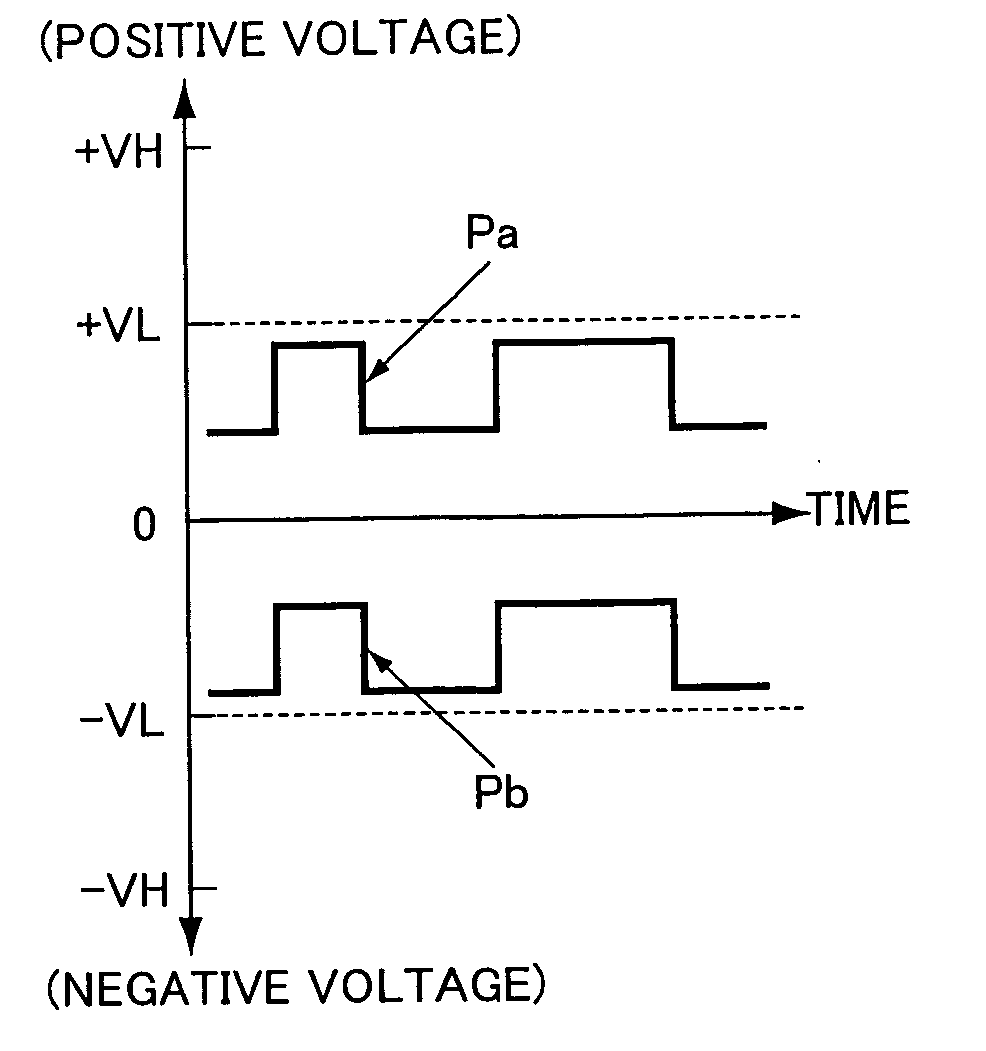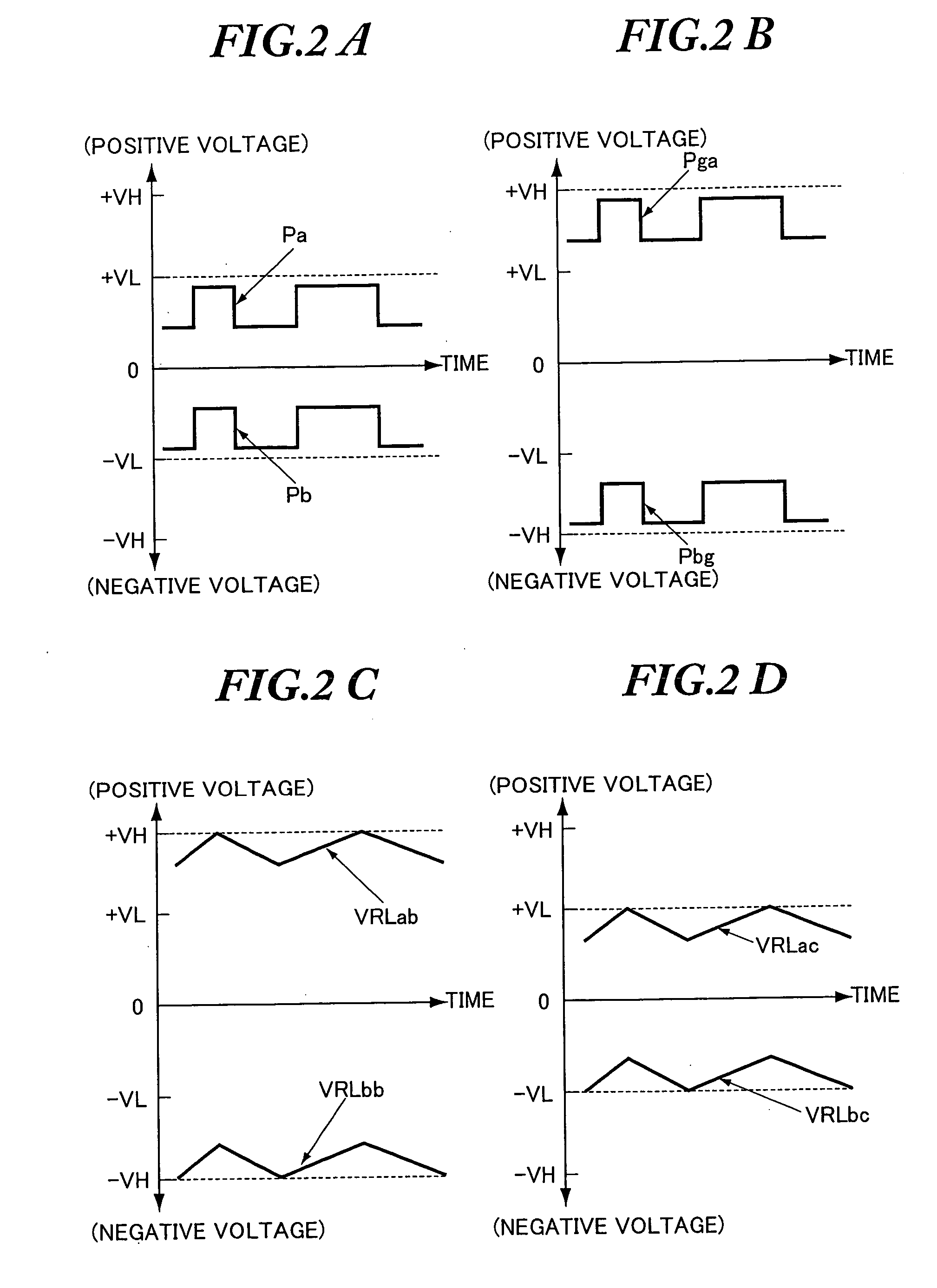Class D amplifier
a class d amplifier and amplifier technology, applied in the direction of amplifiers, amplifiers with semiconductor devices only, amplifiers with semiconductor devices, etc., can solve the problems of waveform distortion in the output modulated signal, easy damage of transistors, and inability of class d amplifiers to perform predetermined operations, etc., to accurately detect excessive electric current flowing
- Summary
- Abstract
- Description
- Claims
- Application Information
AI Technical Summary
Benefits of technology
Problems solved by technology
Method used
Image
Examples
example
[0090] Next, a concrete example will be described in more detail with reference to FIG. 4 and FIG. 5.
[0091]FIG. 4 is a schematic diagram showing the configuration of the class D amplifier 100 of the example. Parts identical or equivalent to those showing in FIG. 3 are denoted by the same symbols. FIG. 5 describes the operation of the class D amplifier 100 of this example. In particular, FIGS. 5(a) and 5(b) describe the operation of the bias voltage level shifters 102a and 102b (described later) and FIG. 5(c) describes the operation of the current mirror circuits 101A and 101B which serve as excessive electric current detection means (described later).
[0092] In the following the characteristic parts of the configuration of the class D amplifier 100 in this example is described compared with the class D amplifier according to the embodiment shown in FIG. 3.
[0093] The bias voltage level shifter 102a provided in the class D amplifier 100 of this example comprises resistors R1a and R2...
PUM
 Login to View More
Login to View More Abstract
Description
Claims
Application Information
 Login to View More
Login to View More - R&D
- Intellectual Property
- Life Sciences
- Materials
- Tech Scout
- Unparalleled Data Quality
- Higher Quality Content
- 60% Fewer Hallucinations
Browse by: Latest US Patents, China's latest patents, Technical Efficacy Thesaurus, Application Domain, Technology Topic, Popular Technical Reports.
© 2025 PatSnap. All rights reserved.Legal|Privacy policy|Modern Slavery Act Transparency Statement|Sitemap|About US| Contact US: help@patsnap.com



